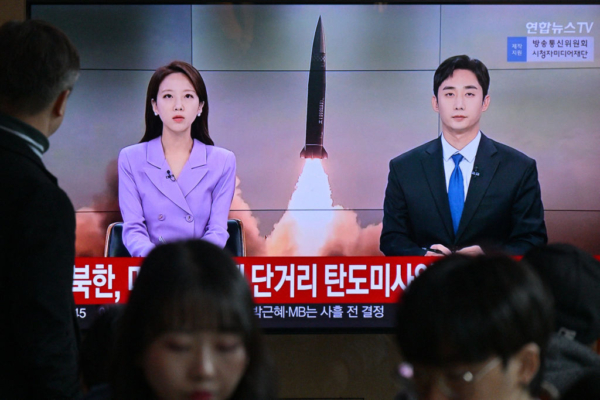In the hours leading up to the US presidential election, North Korea launched multiple short-range ballistic missiles into the East Sea of the Korean Peninsula, showcasing their military capabilities. The timing of this launch, just before the US election day, has sparked concerns across various sectors. However, analysts also warn that North Korea’s actions may be a strong response to the recent joint military exercises involving the US, Japan, and South Korea.
Japanese Prime Minister Shigeru Ishiba stated that the missiles launched by North Korea landed in waters outside Japan’s exclusive economic zone, with no immediate reports of damages.
On Tuesday, the Joint Chiefs of Staff of South Korea announced that the ballistic missiles flew approximately 400 kilometers (about 250 miles), without disclosing detailed information on the number or type of missiles launched. South Korean officials suggest that North Korea may intensify its military displays during the US presidential election to draw attention from Washington.
According to reports from the Associated Press, the missile launch was carried out under the supervision of Kim Jong Un. Some external officials and analysts point out that North Korea’s ultimate goal is to expand its nuclear arsenal and use it as a bargaining chip, hoping to gain concessions such as the lifting of economic sanctions after the new US president is elected.
Experts generally believe that Kim Jong Un prefers Trump to win the election, as he engaged in high-risk nuclear diplomacy with Trump between 2018 and 2019 and considers Trump more likely to make concessions in other aspects. In contrast, Democratic candidate Jillian Hee is unlikely to provide the same opportunities or flexibility, as she has stated during her campaign that she will not “cuddle up with tyrants and dictators like Kim Jong Un who support Trump.”
A few days ago, North Korea test-fired the “Hwasong-19” intercontinental ballistic missile (ICBM) on October 31, with a range capable of reaching the US mainland. In response, the US, along with Japan and South Korea, conducted joint aerial exercises near Jeju Island on November 3 and deployed long-range B-1B bombers to demonstrate military strength.
Following the exercises, Kim Yo Jong, the sister of Kim Jong Un, accused the US, Japan, and South Korea on Tuesday of engaging in “radical and adventurous military threats” against North Korea, escalating tensions.
North Korea claimed last week that the “Hwasong-19” missile tested on October 31 is the “most powerful” ICBM in the world. However, experts point out that this solid-fueled missile is too large to be practical in wartime, indicating that North Korea has yet to master some key technologies required to build functioning ICBMs, such as ensuring warheads can withstand harsh conditions upon re-entry into the atmosphere.
With the Kim dynasty repeatedly showcasing its expanding nuclear and missile programs, tensions between South Korea and North Korea have reached a peak in recent years. Additionally, North Korea’s provision of ammunition and troops to Russia has garnered significant international attention.
On Monday, US State Department spokesperson Matthew Miller reported that up to 10,000 North Korean soldiers have been dispatched to the Kursk region of Russia, near the Ukrainian border, and are preparing to join the fighting in the coming days. If they engage in combat, it would be the first time North Korea has participated in international warfare since the Korean War ceasefire of 1950-1953.
At a United Nations meeting, US Deputy Ambassador Robert Wood warned that the US cannot afford to “stand idly by” regarding North Korea’s nuclear expansion plans and the increasing threats to US security.
Wood also reiterated last week’s call to Russia to clarify whether North Korean forces are present within Russian territory. Russian Deputy Ambassador Anna Evstigneeva responded, “We are not in a courtroom here, and the US questioning carries an interrogative tone that I do not intend to answer.”

